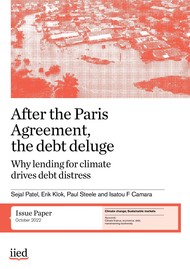Whose debt is it anyway? A sustainable route out of the crisis for low-income countries

The public debt of low-income countries is increasing significantly, with the ratio of public debt service costs to government tax revenue likely to exceed 30% in a third of low-income countries. This could reduce their ability to respond to the COVID-19 pandemic, and to lead an economic recovery that responds to climate change and supports the Sustainable Development Goals.
Rapid and sufficient international debt relief for countries that need it is therefore an urgent priority. This needs to take into account the changed structure of debt and the diversity of lenders.
An important change in the structure of this debt is that both Chinese and private creditors, especially bondholders, have rapidly increased their share of credit to emerging economies.
This paper analyses the extent of the growing debt crisis in low-income economies – particularly in Africa, its complex and diverse nature, and the implications for international debt relief efforts.
Cite this publication
Available at https://www.iied.org/20246iied






